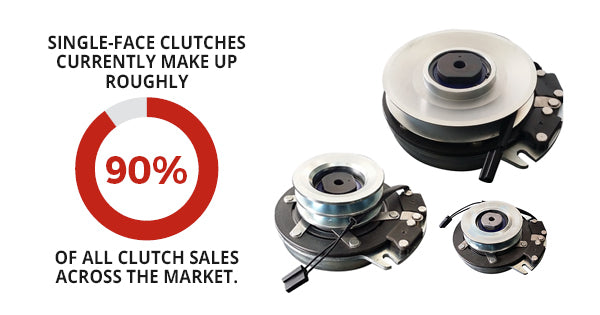Lawn Care Assistance: Clutch Performance, Repair, and Replacement
 The United States Lawn Care industry earned roughly $77 billion of revenue in 2016. From major landscaping jobs on commercial real estate sites to lawn mowing on smaller residential properties, clutch repair and replacement is an essential part of the lawn care sector.
The United States Lawn Care industry earned roughly $77 billion of revenue in 2016. From major landscaping jobs on commercial real estate sites to lawn mowing on smaller residential properties, clutch repair and replacement is an essential part of the lawn care sector. Ariens electric clutches are some of the most efficient and popular products across the entire landscaping industry. Hopefully this guide will help you better understand the ins and outs of electromagnetic clutches and how important electric clutch repair is for maximum performance.
Electromagnetic clutches: what are they?
These clutches utilize both electrical and mechanical aspects to fully operate. Overall, the clutches operate electronically but actually transmit torque via mechanical processes. There are a few types of electromagnetic clutches in use across the country, but one design remains supreme: the single-face electromagnetic clutch. In fact, single-face clutches currently make up roughly 90% of all clutch sales across the market.Various uses for electromagnetic clutches
There are three main applications for clutches: machinery, automotive, and locomotive.-
Clutches applications for machines -- This style of clutch is typically used for copy machines, conveyor drives, packaging equipment, food processing, and factory automation. But the primary machine use for clutches is for lawn mower purposes. Without quality Ariens electric clutches inside lawn mowers, landscaping would be a much more difficult task at any level, both commercial and residential.
-
Clutch applications for automobiles -- Clutches are also commonly used for automobiles, consisting of a clutch release switch inside the gear level. The driver is required to operate the clutch swift by holding the gear level and changing it accordingly.
- Clutch applications for locomotives -- Electromagnetic clutches are also commonly found in diesel locomotives. In both light and heavy locomotives, power transmission has always been a primary concern. Thankfully, since clutch technology has improved dramatically over the years, these large vehicles are able to operate much more efficiently.
Importance of clutch repair and replacement
Unfortunately, clutches often have a short lifespan if they are utilized on a regular basis. If you're frequently using a high power machine or any kind of lawn mower, you need to make sure you're taking the equipment to trusted clutch repair services. Additionally, if you mower's performance is in need of a significant upgrade, purchasing a replacement clutch is your best bet in order to improve performance and save you money.If you're in need of Gravely PTO clutch repair and Gravely PTO clutch replacement, or want to learn more about general clutch repair for Swisher lawn mowers, as well as find high quality Ariens electric clutches, give the professionals at OX Clutch a call today.





